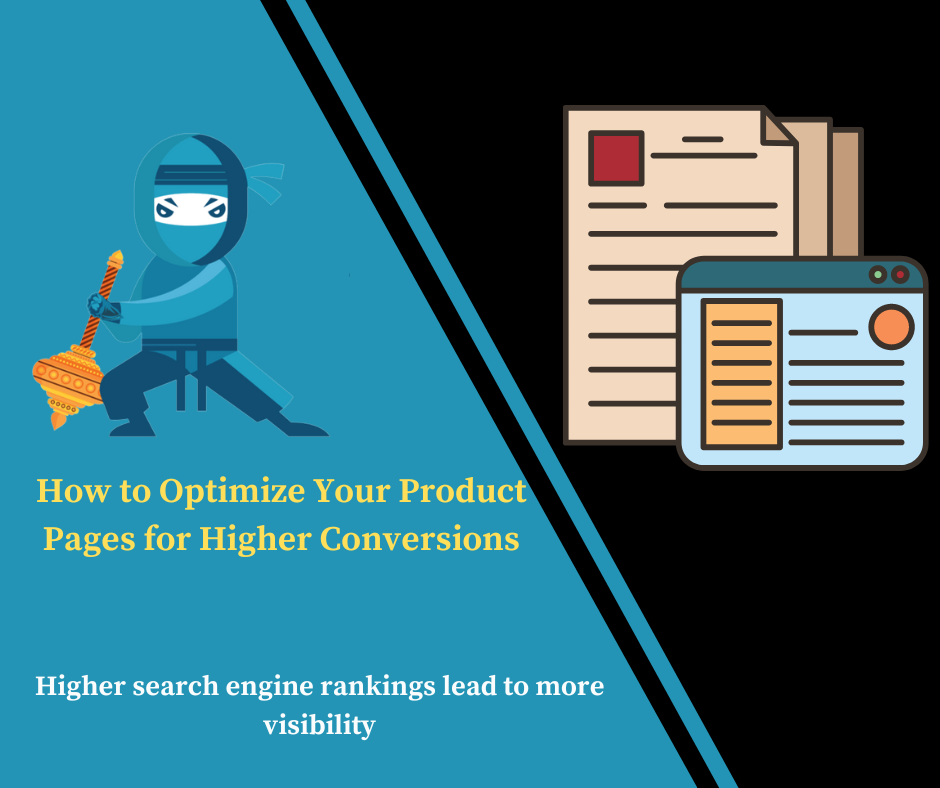How to Optimize Your Product Pages for Higher Conversions
In the competitive world of e-commerce, optimizing your product pages is essential for boosting conversions and driving sales. Your product page is often the final touchpoint before a customer makes a purchase, making it crucial to ensure that it effectively persuades and converts visitors. This article will explore various strategies to optimize your product pages for higher conversions, focusing on key elements that can significantly impact user experience and conversion rates.
1. Craft Compelling Product Descriptions
A well-written product description is critical for engaging potential buyers. It should not only describe the features of the product but also highlight the benefits and value it provides. To create compelling product descriptions:
Focus on Benefits: Instead of just listing features, explain how the product solves a problem or improves the customer’s life. For instance, if you’re selling a blender, emphasize its ability to create smoothies quickly and effortlessly, saving time in the kitchen.
Use Persuasive Language: Employ persuasive language that appeals to emotions and needs. Words like “transform,” “revolutionize,” and “enhance” can make the product sound more enticing.
Include Keywords Naturally: Integrate relevant keywords into the description to improve search engine visibility without compromising readability.
2. Optimize Product Images and Videos
High-quality visuals play a significant role in persuading customers to make a purchase. Here’s how to optimize product images and videos:
Use High-Resolution Images: Ensure that images are clear and detailed. Customers should be able to see the product from multiple angles. Offer a zoom feature to allow users to inspect details closely.
Include Videos: Product videos can provide a more dynamic view of the product, showing it in action and demonstrating its features. This can help customers understand the product better and build trust.
Utilize Lifestyle Images: In addition to standard product images, include lifestyle photos that show the product being used in real-life scenarios. This helps customers visualize how the product fits into their own lives.
3. Implement Clear Call-to-Actions (CTAs)
A strong and clear call-to-action (CTA) is essential for guiding users toward making a purchase. To enhance your CTAs:
Use Action-Oriented Language: Phrases like “Buy Now,” “Add to Cart,” or “Shop Today” are direct and encourage immediate action.
Make CTAs Stand Out: Ensure that CTAs are prominently displayed and use contrasting colors to make them stand out from the rest of the page.
Place CTAs Strategically: Position CTAs at logical points on the page, such as near the product description, above the fold, and at the bottom of the page.
4. Provide Customer Reviews and Ratings
Customer reviews and ratings are powerful tools for building trust and credibility. To leverage them effectively:
Display Reviews Prominently: Ensure that reviews are easily accessible and visible on the product page. This helps potential buyers see what others are saying about the product.
Highlight Positive Feedback: Showcase positive reviews and ratings to create a favorable impression. Consider featuring testimonials from satisfied customers.
Encourage Reviews: After purchase, send follow-up emails asking customers to leave a review. Offer incentives like discounts on future purchases to motivate them.
Also read: How to Boost Product Sales Conversion Rate Optimization Tips
5. Optimize for Mobile Users
With the increasing number of mobile shoppers, optimizing your product pages for mobile devices is crucial:
Ensure Responsiveness: Your product page should be responsive, meaning it adjusts to different screen sizes and orientations. Test the page on various devices to ensure a seamless experience.
Improve Load Times: Mobile users expect fast-loading pages. Optimize images, reduce unnecessary scripts, and use caching techniques to improve load times.
Simplify Navigation: Make it easy for mobile users to navigate through the product page. Ensure that buttons are large enough to tap and that the layout is user-friendly.
6. Streamline the Checkout Process
A complex or lengthy checkout process can lead to cart abandonment. To streamline checkout:
Minimize Form Fields: Ask for only essential information during checkout. The fewer fields users need to fill out, the quicker and easier the process will be.
Offer Multiple Payment Options: Provide various payment methods, such as credit cards, digital wallets, and payment gateways, to accommodate different preferences.
Display Progress Indicators: Show users their progress through the checkout process with visual indicators. This helps reduce uncertainty and keeps users informed.
7. Incorporate Trust Signals
Building trust is crucial for converting visitors into customers. To incorporate trust signals:
Use Security Badges: Display security badges and certifications to reassure customers that their payment information is safe.
Highlight Return Policies: Communicate your return and refund policies. This reduces the perceived risk of purchasing and can increase conversion rates.
Showcase Certifications and Awards: If your product or company has received certifications or awards, feature them on your product page to enhance credibility.
FAQ
What is the most important element of a product page for conversions?
The most important element is a compelling product description that communicates the product’s benefits and value. High-quality images and a clear CTA are also critical for conversions.
How can I improve product page load times?
To improve load times, optimize images by compressing them without losing quality, reduce the number of scripts and plugins, and use caching techniques to speed up page loading.
Should I include customer reviews on my product pages?
Yes, including customer reviews on your product pages can significantly enhance credibility and trust, which can lead to higher conversion rates.
How can I optimize my product pages for mobile users?
Ensure your product pages are responsive, improve load times, and simplify navigation for mobile users. Test the page on various devices to ensure a seamless experience.
What are some effective CTAs for product pages?
Effective CTAs include action-oriented phrases such as “Buy Now,” “Add to Cart,” and “Shop Today.” Ensure they are prominently displayed and use contrasting colors to stand out.
How can I make the checkout process easier for customers?
Minimize form fields, offer multiple payment options, and display progress indicators to make the checkout process quicker and more user-friendly.
What trust signals should I include on my product pages?
Include security badges, clearly communicate return policies, and showcase any certifications or awards to build trust with potential customers.
Conclusion
Optimizing your product pages is a key strategy for increasing conversions and driving sales. By focusing on compelling descriptions, high-quality visuals, clear CTAs, customer reviews, mobile optimization, a streamlined checkout process, and trust signals, you can enhance the effectiveness of your product pages and improve your overall e-commerce performance. Implement these strategies to create a more engaging and persuasive shopping experience that encourages visitors to take action and complete their purchases.








